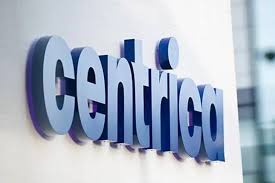Asia Dragon Trust PLC (LON:DGN) has announced its annual financial report for the year ended 31 August 2024.
Performance Highlights
| Net asset value total returnA | | Net asset value per share | ||
| +9.3% | | 452.9p | ||
| 2023 | (16.7)% | | 2023 | 421.3p |
| | | | | |
| Share price total returnA | | | Share price | |
| +16.7% | | 404.0p | ||
| 2023 | (19.5)% | | 2023 | 353.0p |
| | | | | |
| Benchmark total return (in sterling terms) | | Ongoing chargesAB | | |
| +12.0% | | 0.75% | ||
| 2023 | (8.4)% | | 2023 | 0.91% |
| | | | | |
| Earnings per share (revenue) | | | Dividend per share | |
| 6.73p | | 6.60p | ||
| 2023 | 7.06p | | 2023 | 6.60p |
| A Considered to be an Alternative Performance Measure. . | ||||
| B Including fee waiver (see Note 23). | ||||
Dividends and Highlights
Dividends
| | Rate | xd date | Record date | Payment date |
| Interim 2024A | 6.60p | 5 December 2024 | 6 December 2024 | 31 December 2024 |
| Final 2023 | 6.60p | 26 October 2023 | 27 October 2023 | 15 December 2023 |
| A Interim dividend in lieu of final for 2024. | ||||
Highlights
| | 31 August 2024 | 31 August 2023 | % change |
| Performance | | | |
| Total shareholders’ fundsA (£’000) | 711,626 | 479,169 | +48.5 |
| Net asset value per share (capital return basis) (p) | 452.93 | 421.26 | +7.5 |
| Net asset value per share (total return basis) (%) | 9.3 | -16.7 | |
| Share price (capital return basis) (p) | 404.00 | 353.00 | +14.4 |
| Market capitalisationA (£’000) | 634,751 | 401,521 | +58.1 |
| MSCI AC Asia (ex Japan) Index (in sterling terms; capital return basis) | 1,003.12 | 918.92 | +9.2 |
| MSCI AC Asia (ex Japan) Index (in sterling terms; total return basis) (%) | 12.0 | -8.4 | |
| Revenue return per share (p) | 6.73 | 7.06 | -4.7 |
| Total return per share (p) | 39.44 | (88.66) | |
| Dividend | | | |
| Dividend per share (p) | 6.60 | 6.60 | – |
| Gearing | | | |
| Net gearing (%)B | 6.2 | 5.8 | |
| Discount | | | |
| Discount to net asset value (%)B | 10.8 | 16.2 | |
| Operating costs | | | |
| Ongoing charges ratio including fee waiverBC | 0.75 | 0.91 | |
| Ongoing charges ratio excluding fee waiverBD | 0.86 | 0.91 | |
| A Increase during the year includes the impact of assets acquired following the transaction with abrdn New Dawn Investment Trust plc | |||
| B Considered to be an Alternative Performance Measure. | |||
| C 31 August 2024 includes the management fee waiver agreed between the Company and the Manager following the transaction with abrdn New Dawn Investment Trust plc during the year (see note 4 of the financial statements for further details). | |||
| D 31 August 2024 is calculated on the assumption that the management fee waiver agreement between the Company and the Manager following the transaction with abrdn New Dawn Investment Trust plc during the year (see note 4 of the financial statements for further details) is excluded. | |||
Strategic Report
Chairman’s Statement
Future of the Company
In May of this year, your Board announced its intention to undertake a strategic review of the future of the Company, including its ongoing investment management arrangements. The Board of the Company announced on 28 October 2024 that it had concluded such review.
The outcome of the review was a proposal by the Board (the “Proposal”) that the Company should combine with Invesco Asia Trust plc (“Invesco Asia”), an investment trust managed by Invesco Fund Managers Limited (“IFML”). The enlarged Invesco Asia would continue to be managed by IFML under Invesco Asia’s existing investment objective and investment policy.
Under the strategic review the Board undertook a full and robust review process and considered a wide range of options for the Company. The proposal to combine the Company with Invesco Asia was considered the most attractive outcome for shareholders, providing a partial capital return alongside the continuation of shareholders’ investment in an investment trust that has delivered strong long-term performance managed by a highly regarded team at IFML. The combination, if approved, will create a vehicle of scale with a diversified shareholder base, a significant increase in dividend for Asia Dragon shareholders who roll over into Invesco Asia and a more competitive management fee. Furthermore, the introduction of a triennial unconditional 100 per cent. tender offer alongside ongoing buyback activity by the enlarged Invesco Asia provides a compelling approach to discount management that we expect to serve its shareholders well over time.
I set out below under ‘Result of the Review’ more background on the Proposal and its rationale and benefits to the Company’s shareholders. The Proposal is subject to shareholder approval at general meetings to be held in early 2025.
Results
In the 12 months to 31 August 2024, the MSCI AC Asia ex Japan Index rose 12.0% in sterling total return terms. The Company’s net asset value (“NAV”) increased 9.3% on the same total return basis after accounting for dividends. The share price rose from 353p to 404p over the year, which, with dividends added back, yielded a total return of 16.7%. This reflected a narrowing of the discount to NAV to 10.8% as at the year end, from 16.2% as at the previous financial year end.
Performance
Your Company posted mixed returns over the reporting year, with initial weakness in late 2023 but with performance stabilising by August 2024. The stabilisation followed a portfolio “reset” after the Company’s combination with abrdn New Dawn Investment Trust plc in November 2023, allowing the larger portfolio to invest in Australasia and up to 30% in non-benchmark holdings. This broadened investment universe flexibility enabled the Manager to invest in quality stocks that had previously been inaccessible, positively impacting performance. Key contributors over the year included non-benchmark stocks like ASML and ASM International in the semiconductor and technology hardware segments. As AI-related apps and chips start to proliferate, rising demand in terms of usage and complexity is boosting the semiconductor and consumer electronics segments. Other key contributors included Taiwan Semiconductor Manufacturing Co, power testing services provider Chroma ATE and passive component supplier Yageo in Taiwan, as well as Indian real estate group Godrej Properties.
I would also highlight that China, which was the biggest detractor from performance over the interim period, remained a key detractor for the full financial year. As I mentioned in my interim statement, the Manager has undertaken a thorough review of the Company’s Chinese holdings, and resized exposures where appropriate. This was implemented in view of the near-term headwinds in China, namely, a slower than expected consumer recovery and a still-weak property sector, amid a broader soft macro backdrop.
As a result, the Manager significantly reduced overall Chinese exposure. With a focus on good earnings visibility and steady cash flow generation, the Manager has added or increased exposure to Chinese holdings that show such attributes but exited positions where the outlook is more uncertain. The Manager retains high conviction in the Chinese holdings that remain in the portfolio, and continues to see significant value opportunities in this market. However, the Manager remains watchful of structural challenges in the country as well as more details on the recent stimulus measures and execution and implementation of policies. Encouragingly, in the latter part of the financial year from 1 January 2024 to 31 August 2024, the Chinese exposure has turned around to become a marginal contributor to the Company’s relative performance.
The Manager’s Report covers the Company’s performance in greater detail.
Result of the Review
In May this year, your Board announced its intention to undertake a strategic review of the future of the Company, including its ongoing investment management arrangements. Under the review, the Board gave consideration to retaining the existing manager, appointing a new external third-party manager and entering into a combination with another investment trust. The Board was pleased by the interest it received from a large number of high-quality management groups, which were evaluated by the Board with the assistance of Stanhope Consulting. The Board announced on 28 October 2024 that it had agreed heads of terms with Invesco Asia and IFML for a combination of the assets of the Company with Invesco Asia by means of a section 110 scheme of reconstruction and voluntary winding up of the Company.
In reaching this decision, the Board noted a number of attractions to a combination with Invesco Asia:
· Strong Long-Term Investment Performance: Invesco Asia has delivered a total return of 49.4 per cent. over the five years to 30 September 2024, representing outperformance of 23.2 per cent. against the MSCI AC Asia ex Japan Index which has delivered a five-year total return of 26.2 per cent. over the same period.
· Unconstrained Investment Approach: Invesco Asia has a highly rated and experienced investment team with an unconstrained investment approach and a focus on valuation whereby the managers seek to identify stocks that have become dislocated from fair value with a potential catalyst for change. The Board of the Company was impressed by the distinctive and disciplined value-oriented investment approach employed by IFML which has delivered attractive returns for Invesco Asia shareholders over the long term.
· Aligned Investment Exposure: The Proposal will allow shareholders to continue their investment in a core Asia (ex-Japan) equity strategy.
· Increased Dividend: The Company’s shareholders will benefit from a significant increase in dividend as a result of Invesco Asia’s policy of paying a distribution of 4 per cent. of NAV per annum which will move from semi-annual to four quarterly payments each equal to 1 per cent. of NAV.
· Depth of Resource: Invesco Ltd, a global asset manager with $1.8 trillion of AUM, including $15.9 billion in Asia and EM Equities (as at 30 September 2024), will remain as the investment manager of the combined entity. Invesco Asia will continue to benefit from the expertise of its portfolio managers, Fiona Yang and Ian Hargreaves, and from the depth of resource and experience offered by the wider Asian & Emerging Markets Equities Team.
· Partial Cash Exit: The Proposal will provide the Company’s shareholders with the opportunity to elect to exit part or all of their holding in the Company for cash, subject to an overall limit of 25 per cent. of the issued share capital of the Company (excluding shares held in treasury) (the “Cash Exit”).
· Continued Scale: The combination with Invesco Asia will allow the Company’s shareholders to continue to participate in a vehicle of scale, with the enlarged Invesco Asia expected to be a constituent of the FTSE 250, notwithstanding the potential substantial return of capital by the Company pursuant to the Cash Exit.
· Periodic Exit Opportunity: Following completion of the Proposal, Invesco Asia will introduce a triennial unconditional tender offer of up to 100 per cent. of the issued share capital of Invesco Asia, with the first tender offer expected to take place in 2028.
· Discount Management Policy: Invesco Asia will maintain its stated average discount target of less than 10 per cent. of NAV calculated on a cum-income basis over the financial year.
· Competitive Management Fee: IFML has agreed that, with effect from the admission to listing and trading of the new Invesco Asia shares issued in connection with the Proposal, the management fee payable by Invesco Asia to IFML will be reduced to 0.75 per cent. on the initial £125m of net assets; 0.6 per cent. of net assets between £125m and £450m; and 0.5 per cent. on net assets in excess of £450m. The new Invesco Asia fee structure will result in a lower blended management fee than is currently payable by the Company.
· Shareholder Register: The Proposal will allow a number of shareholders to consolidate their holdings across the two companies while also creating a more diversified shareholder base through a combination of the balance of the two share registers.
The Proposal will be subject to approval by the shareholders of both the Company and Invesco Asia in addition to regulatory and tax approvals. The Company and Invesco Asia have each received an irrevocable undertaking from City of London Investment Management Limited representing 30 per cent. of the Company’s issued share capital and 21 per cent. of Invesco Asia’s issued share capital (in each case excluding treasury shares) and letters of intent or indications of support from shareholders representing a further 25 per cent. of the Company’s issued share capital and 17 per cent. of Invesco Asia’s issued share capital (in each case excluding treasury shares), to support the Proposal.
A circular providing further details of the Proposal and convening general meetings to approve the Proposal, and a prospectus in respect of the issue of new Invesco Asia shares in connection with the Proposal, are expected to be posted to the Company’s shareholders in due course. The Proposal is anticipated to become effective in early 2025. In the event of the Proposal becoming effective, a number of the Company’s Directors will join the four existing directors of Invesco Asia on the board of the enlarged company.
Gearing
The Board continues to believe that the sensible use of modest financial gearing should enhance returns to shareholders over the longer term, being one of the advantages of the closed end structure. Cognisant of the ongoing strategic review, the Company extended the maturity of its unsecured £50 million multi-currency revolving credit facility (the “RCF”) with The Royal Bank of Scotland International Limited, London Branch (the “Lender”) which was due to expire on 29 July 2024, out to 29 March 2025. At the same time the principal amount available under the RCF was increased to £75 million. The £25 million increase was used to repay the Company’s £25 million Fixed Rate Loan with the Lender which also matured on 29 July 2024. As a consequence, the Company now has a single unsecured £75m RCF with the Lender, under which the Company retains flexibility to repay and cancel the facility at any time during its remaining life, subject to five business days’ notice. Under the new facility, the Company has made short term revolving drawings of GBP 25 million at a current all-in rate of 6.15% and HKD 480 million at a current all-in rate of 5.28%. The Company’s total borrowings remained broadly unchanged at £71.8 million in Sterling terms at year end, giving a net gearing figure of 6.2%. The amounts drawn down were unchanged at the time of writing and remain comfortably within the covenant limits.
Discounts and Share Buybacks
The discount level of the Company’s shares is closely monitored by the Board and share buybacks are undertaken when appropriate. During the year ended 31 August 2024, 9.5 million shares were bought back into treasury at a cost of £34.2 million (2023: 5.9 million shares were bought back into treasury at a cost of £23.7 million). Since 31 August 2024, a further 891,234 shares have been bought back into treasury at a cost of £3.7 million. The discount at the financial year end was 10.8% (2023: 16.2%). As at 21 November 2024 the discount was 10.6%.
Annual General Meeting and Dividend
In the light of the outcome of the strategic review, the Board intends to convene the AGM in respect of the financial year ended 31 August 2024 to align with the dates for the general meetings of the Company required to implement the combination with Invesco Asia. Accordingly, the Notice of AGM, which will include an explanation of the proposed AGM business, will be sent to shareholders as a separate standalone document at the same time as the shareholder circular relating to the combination with Invesco Asia.
The Company’s revenue return per share was 6.7p for the year to 31 August 2024 (2023 – 7.1p). As the posting date for the circular and Notice of AGM will be after the publication of the Annual Report, the Board has declared an interim dividend for the year ended 31 August 2024 of 6.6p per Ordinary share (2023 – 6.6p), in lieu of a final dividend, to allow for a similar dividend payment date as in recent years. The interim dividend will be paid on 31 December 2024 to shareholders on the register on 6 December 2024. Following implementation of the Proposal it is expected that the enlarged Invesco Asia will maintain its current policy of paying an annual dividend equal to 4 per cent. of its Net Asset Value but it will increase the frequency of its dividend payments from the current half-yearly basis (2 per cent. in each of November and April) to a quarterly basis (four dividends of 1 per cent. every three months). The first dividend payable by the enlarged Invesco Asia to which the Company’s shareholders will be entitled is expected to be the quarterly dividend payable in late April/early May 2025.
Composition of the Board
As outlined in last year’s Annual Report, as part of the combination with abrdn New Dawn, Donald Workman, Stephen Souchon and Nicole Yuen joined the Board as non-executive Directors of the Company on 9 November 2023 and were subsequently elected by shareholders at the AGM in December 2023. Following completion of a six month transition period, on 9 May 2024, Donald Workman, Charlie Ricketts and Gaynor Coley retired from the Board. On behalf of the Board I would like to reiterate our thanks to Charlie, Gaynor and Donald for their dedication, service and contributions to the Company.
Outlook
The US monetary policy easing cycle has begun, boosting companies and economies across Asia. Lower interest rates improve borrowing conditions, encouraging spending and investment. However, central banks must balance this with inflation and currency stability concerns. The election of Trump and Republican dominance of Capitol Hill clearly present challenges to Asia. The most obvious issue is the increased threat of tariffs, and this time not just on Chinese exports. The impact may be in part offset by the clearly stimulatory nature of the Trump package, although this may have implications for monetary conditions given the influence of US monetary conditions across the region.However, as our investment managers point out, Asia is a diverse region, and does not suffer from many of the macro-economic imbalances seen elsewhere given generally strong fiscal positions, high domestic savings, scope to stimulate domestic growth and robust external positions. There should be plenty of opportunities for active stock pickers.
Consequently, the Board remains positive about the outlook for Asian equities. The corporate outlook is strong due to broad-based growth and strong fundamentals among leading companies. More broadly, Asia is evolving, with more growth opportunities beyond China. India is fast growing as an economic power in its own right, while Southeast Asia is benefiting from supply chain diversification amid geopolitical uncertainty. The AI boom in Asia’s semiconductor industry highlights the region’s role in global innovation, presenting investment opportunities in Korea and Taiwan. Other growth themes include the green transition, with Asia leading in electric vehicles, smart grids, and renewable energy. Rising affluence spurs growth in financial services, while urbanisation and the infrastructure boom benefit property developers and mortgage providers.
James Will
Chairman
22 November 2024
Investment Manager’s Review
Performance
As the Chairman notes in his statement, we continued to see macro factors play an outsized role in influencing investor sentiment and equity markets across Asia and globally over the review period. These included a slowing China amid a slower than expected consumer recovery post-Covid and property downturn, US monetary policy trajectory and geopolitical uncertainty. At the same time, we saw optimism over potential US rate cuts, signs of resilience in corporate earnings and strength in the technology sector. Over the 12 months to 31 August 2024, the MSCI AC Asia ex Japan benchmark index rose 12.0% in sterling total return terms, while the Company’s net asset value (“NAV”) increased 9.3% on the same total return basis after accounting for dividends.
Over the financial year, we witnessed mixed market fortunes across the Asia Pacific ex Japan region (see chart 1 below). Within the China market, we saw a meaningful style rotation out of quality into value, and a chase for thematic names with AI and state-owned enterprise (SOE) reform in vogue. The Hong Kong market bore the brunt of the spillover impact, which was also exacerbated by heavy foreign capital outflows. In contrast, Taiwan and India were the best performing markets. Taiwan benefitted from a big uplift in optimism around a semiconductor sector turnaround and positive demand trends in AI applications. India’s strength was supported by a resilient macro backdrop, including a property boom, strong urban consumer sentiment, and robust infrastructure capex.
Against this backdrop, the portfolio posted mixed returns with a weak start but stabilising performance towards the end of the financial year. We highlight three key areas of performance drivers: China and Hong Kong, technology and finally India.
1. China and Hong Kong
Together, China and Hong Kong were the biggest detractors, where our still significant exposure to the Chinese consumer weighed on performance (see Chart 2 below). We do like many of the domestic consumption-oriented companies in China. They have been largely insulated from the geopolitical headwinds buffeting the country for years now. They have also been broadly aligned with domestic policy and the multi-year effort to shift China’s economic growth model away from a reliance on exports and investment to one that is domestic consumption-driven. Most importantly, many of these companies are evidently high-quality stocks with great brands, superior margins and return metrics, healthy cash flow and balance sheets. They still offer huge long-term growth potential tied to the rise of the Chinese middle class. However, over the past 18 months, this has not been a rewarding part of the market to be invested in. The Chinese consumer emerged from the pandemic with massive pent-up savings, but this did not convert into spending as China failed to follow the re-opening playbook seen in most other countries around the world. Instead, the gloom around the all-important property sector, in which so much of China’s household wealth is tied up, weighed heavily on consumer sentiment. This was compounded by slowing economic growth and rising job insecurity.
Policymakers attempted to stimulate consumption and support the property sector, but these moves proved insufficient and consumer stocks and their proxies continued to get punished despite sometimes resilient underlying fundamentals. For example, our holding in Hong Kong-listed life insurer AIA Group was amongst the largest performance detractors despite the fact that it delivered solid earnings growth. Baijiu maker Kweichow Moutai was another such example. Other consumer holdings saw some deterioration in underlying growth given the challenging macro backdrop, for example, quick service restaurant operator Yum China and brewer Budweiser APAC, but this was not commensurate with their declines in share prices, which signalled to us that these stocks had been oversold. As detailed in the Portfolio Activity section below, we tightened up our exposure to the Chinese consumer over the period in light of the headwinds, but retained core holdings given their quality and value. Encouragingly, towards the financial year end, we saw stabilising performance from China and Hong Kong, leading to improved overall performance of the portfolio over the final quarter.
2. Technology
We had proactively built up the portfolio’s exposure to the technology hardware sector in anticipation of a rebound in the semiconductor cycle. Our overweight position to the sector significantly contributed to performance, as the sector rallied on a cyclical upturn in semiconductor pricing and strong demand linked to AI. Contributors included several of the Company’s Taiwanese holdings, namely leading passive components maker Yageo Corp and semiconductor chip manufacturer Taiwan Semiconductor Manufacturing Co (TSMC). Both companies posted better than expected results in the first quarter of 2024 and TSMC raised its medium term guidance thanks to the rapidly growing contribution from AI-related demand. Elsewhere, our non-benchmark Netherlands-based holdings in ASML and ASM International also benefited from improved prospects in the advanced semiconductor industry.
3. India
Our Indian holdings were a key driver of positive performance, accounting for 4 out of the top 10 biggest contributors. These were residential real estate developer Godrej Properties, which has been capitalising on the boom in the housing cycle in India; leading life insurer SBI Life Insurance; online insurance aggregator PB Fintech, and Power Grid Corporation of India which operates the majority of the electricity transmission network across the country. All four names have seen robust earnings growth tied to structural growth stories and themes within India that we believe have many years still to run. Rising affluence in India, for instance, is leading to fast-growing premium consumption patterns in areas like financial services, automobiles, food, and personal care, while urbanisation and the current boom in infrastructure development is benefiting property developers, materials producers such as in cement, and industrial and utility plays.
Portfolio Activity
Throughout this turbulent macro-economic and political period, we have continued to focus on quality companies for both their resilience and long term structural growth potential. Four key areas we wish to highlight are as follows:
1. China: Scaling back the consumer exposure and focusing on nearer-term cash flow generation and earnings visibility
China presented us with a dilemma. On the one hand, the headwinds buffeting the Chinese consumer were strong, making life hard-going for even the best-run companies (see Chart 4 below). On the other hand, investor sentiment towards the consumer sector and its proxies was so poor that it was also clear that many of the stocks had been oversold and were trading at very attractive valuations. Whilst we were confident that our companies would weather the storm given their superior quality, it was also difficult to pinpoint any obvious catalyst on the horizon that would trigger a re-rating in the stocks. Balancing these two opposing forces, we chose to reposition the portfolio in China, re-evaluating more carefully our exposure to the Chinese consumer given the obvious headwinds, whilst also retaining positions in high-quality holdings with strong cash flow generation and solid near-term earnings visibility that were trading at deeply discounted valuations. In some cases, this involved completely exiting certain names where visibility was less clear, including China Tourism Group Duty Free, GDS, Glodon and Wuxi Biologics. However, we also introduced a new name, Asia’s leading online travel agency Trip.com, which was benefiting from the recovery in both domestic and international travel and has a long runway for growth. Overall, our decisions resulted in a reduced exposure to China.
2. India: increased exposure with new initiations across broad swathe of sectors
India stands in stark contrast to China, being perhaps the most attractive macro-economic story in the region currently, with accelerating economic growth and sound macro-economic indicators (see Chart 5 below). The dilemma for us in this market is that much of that positive story has seemingly already been priced into the market, with few quality stocks trading at attractive valuations. We have been highly cognisant of the valuation challenge, but selectively we were still able to find multiple new ideas centred on companies benefitting from the economic tailwinds and delivering robust earnings growth that underpin and support the valuations.
One good example is Bharti Airtel, a leading telecom service provider with a pan-India reach and sophisticated customer base with higher than average mobile spending. The domestic telecom market has rapidly consolidated and Bharti is now capitalising on the improved economics and rising tariffs in the sector. Another example is Indian Hotels (IHCL), India’s largest hospitality company, which is well placed to tap into the industry’s multi-year upcycle with improving occupancy rates and rising average room rates. We also introduced conglomerate Mahindra & Mahindra, which has been delivering healthy growth in its autos business, with market share gains in the passenger vehicle business, especially within the sports utility vehicle segment. Pidilite Industries was another addition. This is a quality consumer and specialty chemicals business with leading brands in the home improvement category that will benefit from the robust recovery in the housing cycle. Conversely, we exited Kotak Mahindra Bank and Maruti Suzuki.
3. Technology: Broadening exposure to the AI supply chain with a focus on Taiwan and Korea
We broadened our exposure to the AI supply chain and cyclical laggards, given the positive structural growth outlook for Asia’s technology sector (see chart 6 below). We focused on Taiwan and South Korea, which are key players in the global tech supply chain and benefiting from increased demand for semiconductors, AI and other advanced technologies. We invested in Taiwan’s GlobalWafers, a silicon wafer manufacturer that ranks as one of the global leaders in a consolidating industry. We introduced Yageo Corp, Taiwan’s leading supplier of passive components and the world’s third largest provider. We also added South Korea’s SK Hynix, the second largest DRAM and NAND manufacturer globally by revenues. We view it as well positioned and benefiting from growing demand for high bandwidth memory (HBM) for AI processing, such as machine learning and neural network AI. This reflects our rising conviction in the structural growth memory demand backed by AI.
4. Vietnam: increased exposure to this attractive non-benchmark growth market
Finally, we increased our exposure to Vietnam, a non-benchmark market with tremendous long-term growth potential given its young demographics, rising wealth levels and entrepreneurial spirit. More broadly, the liquidity of the stock market has improved through the years, along with market capitalisation, and this has enhanced its eligibility for the Company from a liquidity and risk perspective. The country is also emerging as an alternative supply chain option amid geopolitical uncertainties, attracting foreign direct investment in high-tech sectors, especially automotive and electronics (see chart 7 below). At the time of writing, we have invested in Joint Stock Commercial Bank For Foreign Trade Of Vietnam (Vietcombank), which we rate as among the highest quality banks in the country, with scale, a strong deposit franchise and a good long-term track record. The bank has been able to manage through multiple cycles and deliver growth over time, too. As for fundamentals, it leads its peers in profitability and efficiency, with a higher return on equity, lower cost-to-income ratio and lower cost of funding versus its domestic rivals. This is our second stock holding in Vietnam after FPT Corp.
Outlook
The US has elected Donald Trump as its next president, and he has also secured control of both Houses of Congress. Asset prices have moved along with a focus on the reflationary aspects of Trump’s pre-election pledges and promises. We expect tax cuts and deregulation, but also higher tariffs. This could mean higher nominal GDP, mainly via inflation, and potentially higher for longer interest rates. We continue to monitor Trump developments closely, and higher nominal GDP growth and higher-than-otherwise interest rates are the macro implications that we are most confident about for now.
As for the implications for Asia, it is a complex picture. Trump is likely to drive uncertainty and volatility, but this could also create opportunities for long-term investors. Higher tariffs and barriers to trade are bad news, and this seems likely under Trump. China could be affected, and this might prompt the Chinese government to ramp up domestic economic growth efforts with aggressive stimulus measures. It is also possible that with a more transactional US President, the US and China could arrive at some mutually beneficiary agreement; we should remember the first Trump presidency did see the Chinese equity market outperform. We should not ignore the risks though as unmitigated; the imposition of huge tariff hikes would have a significant impact on China’s economy. Similarly, export markets, too, with trade-oriented countries potentially facing pressure from higher tariffs and limited rate cuts in the US.
Geopolitical tensions remain difficult to navigate and whilst the world’s focus is on Ukraine and the Middle East, Asia could also see shifts if Trump follows a similar playbook to his first term. So, we are likely to be in for a period of change, uncertainty, and volatility across multiple fronts.
Asia, however, is a diverse region and it is wrong to paint it with the same broad brush. Largely domestic driven economies like India will be insulated and may even benefit from continued supply diversification away from China. Intra-regional trade continues unhindered. Asia also does not have the macro imbalances that the West is saddled with, so economies should be resilient. And there is still growth. All of which means quality companies should remain structurally well positioned.
From a portfolio perspective, we believe we are well-prepared for a Trump victory due to our quality-focused stock picking approach. We have tightened quality characteristics, adding names with greater near-term earnings visibility and steady cash flow generation, while reducing and exiting names with less visible earnings. We have managed down our exposure to tariff-related risks. For our China exposure, we have focused on each holding’s ability to defend and grow market share, expand overseas with limited tariff risks, and deliver shareholder returns through dividends and buybacks. We have also reduced our technology exposure. We maintain our conviction in our holdings and their ability to navigate market crosswinds, given their quality and fundamentals.
Finally, Asia remains home to some of the highest quality and most dynamic companies in the world. The region continues to offer rich pickings, underpinned by long-term structural growth trends such as the rising middle classes, rapid adoption of emerging technologies and continued urbanisation, enabling bottom-up stock pickers like us to deliver sustainable returns over the long term.
Pruksa Iamthongthong and James Thom
abrdn (Asia) Limited
22 November 2024










































